Virtual Ensembles Showcase
UPDATED: When we learned, late last spring, that the upcoming Carleton academic year would be fully online, there was a (virtual) palpable sense of bewilderment and apprehension amongst our Music colleagues. It was one thing to consider putting courses online, but how could we possibly offer our performance ensembles in a virtual format? In a meeting with our Ensemble Directors in July, our hardworking SSAC Tech team (Paul Jasen and John Rosefield) outlined several possibilities for moving forward into this new frontier of online performance. At the same time, a summer research project (OMER), funded through Carleton’s Faculty of Arts and Social Sciences (FASS), tackled this very problem, engaging three of our Ensemble Directors and a group of enthusiastic students to try out platforms and techniques for making music together online. With little time to consider the options or anticipate the steep learning curve ahead, our Ensemble Directors enthusiastically gave their thumbs up to forge ahead.
The results have been as creative and varied as the directors and students involved. Here, in their own words, the Ensemble Directors give us a glimpse into the synchronous and asynchronous music-making in their ensembles during over the 2020-21 school year. Some audio and visual examples are included to give you a sense of the process and efforts. Kudos to all involved; we are making history!
– Kathy Armstrong, Supervisor of Ensembles and Masterclasses
* * *
Jump to an Ensemble
Fall: Roots | Lyric Theatre | Fusion | Chamber Music | Saxophone | Choir | Jazz
Winter (NEW): Brass | Singer-Songwriter
Roots Ensemble Directed by Petr Cancura
(2021 Carleton Music Artist in Residence)
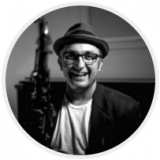
This ensemble is about exploring the roots of the musicians in the group, their inspirations, and relevant musical threads. We tackled different styles of music that challenged our skills within the context of each project and tried to clearly identify the best musical solution that we could offer in the moment. Our goal was to advance our musical and online skills and explore concepts that move us forward as musicians and human beings.
Process
We had a group of very musical artists. Our non-standard instrumentation compelled us to find creative ways of putting together songs. We used every minute of our three-hour sessions to work together on this music. For certain sessions we would break into duos and trios, each of which would be given a set amount of time to record the same song, coming up with their own approach. For other projects we would talk about a song, what we liked about it and how we wanted to approach it before assigning tasks for each member. Then we would come back together, listen, mix and decide what to do next. The platforms we used were Zoom, Zoom Livetrack 8, Loopback, Logic and Digital Audio Workstations (DAW).
“Beyond their sense of musicality, it is clear how everyone in this group brought an open minded and supportive approach imperative to the success of an ensemble whether it is in person or virtual.”
Each session, we began by working on a melody or a tricky piece of music, whereby everyone would be muted and playing along with a leader to learn the song and its phrasing. In a similar fashion we worked on rhythm and time, an element as important as instrumental technique itself. Beyond their sense of musicality, it is clear how everyone in this group brought an open minded and supportive approach imperative to the success of an ensemble whether it is in person or virtual.
Directed by Petr Cancura. Medley: ‘Clinch Mountain Backstep’ by Ralph Stanley; ‘Glory, Glory’ (trad.). Performed by Marianne Keuleman, Rachel Warkentin, Luke Letourneau, Cole Hallman, Mish Rechberger.
Repertoire
There were three compositions we tackled as a full group this semester, these include: “Hi-Lili Hi-Lo” written by Bronislau Kaper & Helen Deutsch in 1952; “Canto de Ema”, a traditional Brazilian folk song, and “Don’t Think Twice It’s Alright” by Bob Dylan. We also worked through a series of solo, duo and trio projects on: “Glory Glory”, as inspired by the Otha Turner Fife & Drum Group; “Clinch Mountain Backstep”, an instrumental by Ralph Stanley, “Afro Blue” by Mongo Santamaria and “St. Louis Blues” accredited to W.C. Handy. Lastly, we tackled a solo project of composing a piece to accompany a short silent film.
Looking ahead
Going forward we will continue to focus on solo, small group and full group projects. We will also dive into software that will make synchronous collaboration possible. Although this will require some time set aside to get it all working, being able to play together synchronously, and therefore working on that human music connection is really important and is the one part we really miss in our ensemble.
The Roots Ensemble members
Conor Veinotte – violin, guitar, vocals, percussion; Cole Hallman – bass, electronics, percussion; Mish Rechberger – guitar, percussion; Marianne Keuleman – guitar, piano, vocals, percussion; Rachel Warkentin – piano, vocals, percussion; Luke Letourneau – piano, guitar, vocals, percussion, electronics, drum programming; Ben Kissner – guitar, percussion
Directed by Petr Cancura. Original music performed by Conor Veinotte. ‘Breath Takers’ (Public Domain Film)
Lyric Theatre Ensemble Directed by Susan Blyth-Schofield and David MacAdam

To say it has been an interesting term is a huge understatement! The students were amazing, and thanks to them and my co-director David MacAdam and our collaborative pianist Larry Tarof, we were able to do some excellent work this term. Musical Theatre, with its singing, acting, and dancing, is designed to happen live with people all in one place. Distancing was stressful for everyone, but we all learned to take a deep breath and have fun while we rolled with the punches when things did not work quite as planned.
Process
From the beginning we put the emphasis on process, and on learning how to do music and theatre in this online environment. We involved the students with all aspects of the course, and they were very helpful, offering both ideas and technical skills.

Class time was a scheduled mix of asynchronous information sharing, and synchronous and asynchronous work on music and blocking. For this work we focused on two platforms: Soundjack and Zoom. Soundjack made “live” music-making possible, although we did push the limits of the technology having 16 people together. That adds up to 120 connections all having to work at the same time. This “live” environment was great for the students’ morale – they were making music with each other synchronously. It was also really nice to listen to them work together, and to be able to make comments and corrections in real time. In the last rehearsal students performed their work for each other “live”.
“We involved the students with all aspects of the course, and they were very helpful, offering both ideas and technical skills.”
The real-time feel of Soundjack also made making personalized audio tracks for the students possible. We worked together on building an interpretation and, once we were happy with it, Larry recorded the piano part while the student was singing live. This then became the student’s personalized audio track for further rehearsal and for creating their final video. If the interpretation evolved further, another track was made in the same way.
Blocking rehearsals were usually held on Zoom because of Soundjack’s limited video capacity. The Zoom time lag was mostly fine for solos but made larger ensembles, especially those with choreography, challenging for everyone.
Directed by Susan Blyth-Schofield and David MacAdam ‘Johanna’ by Stephen Sondheim Performed by Noah Bragança
Part of the plan was to create an end-of-term Video Compilation, so that the students would have a record of their work from the Fall of 2020. This has been a challenging process and we continue to work on it, using separate audio and video tracks. Over the break we will be editing those tracks together. We hope to share some of this compilation at a later date.
Repertoire
As far as repertoire went, we picked up where we left off last March (when everything shut down) with our tribute to Stephen Sondheim’s 90th birthday. We worked on one full company number (“Comedy Tonight”) and two others with sections using everyone (“Being Alive” and “Getting Married Today”), a sextet (“America”), two trios (“You Could Drive A Person Crazy” and “Old Friends”), six duets (“There’s Always a Woman”, “No One Is Alone”, “Unworthy of Your Love”, “Ohio”, “If Momma Was Married”, and “Barcelona”) and eleven solos (“Johanna”, “Could I Leave You”, “Everybody Loves Louis”, “Losing My Mind”, “I Feel Pretty” (in Spanish), “Everybody Says Don’t”, “Not While I’m Around”, “Another Hundred People”, “On the Steps of the Palace”, “Children Will Listen”, and “I Remember”.
Looking ahead
Of course, there were glitches. Maintaining connections on Soundjack was tricky and technical issues ate up valuable rehearsal time, and on some days made what was planned impossible. Going forward I would like to do more video and audio recording from the beginning so that we have a record of the work done over the term. I would also be more selective in choosing repertoire that is suitable for the current online technology. We all missed the personal interaction and are looking forward to the time when we can once again meet in person!
The Lyric Theatre Ensemble members
Alicia Asp-Chief, Mena Boettger, Noah Bragança, Rhaena Campbell, Skye MacDiarmid, Lauran McKay, Emily Poulsen, Sam Robinson, Sarah Kate Ruddock, Aiona Santana Macias, Sherrie Spelchuk, Rebecca White, and Maggie Wolfe.
Directed by Susan Blyth-Schofield and David MacAdam ‘Everybody Loves Louis’ by Stephen Sondheim Performed by Rebecca White
Fusion Ensemble directed by Wayne Eagles
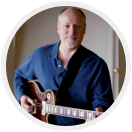
It’s been an interesting term, being fully-online. Lots of initial hurdles with connectivity and working out best online platforms, but I’m very proud of the work completed by the Fusion members. Special shout-out to CU BMus alumni Justine Walker, who has been a tremendous support, given her many years of Fusion Ensemble membership.
Process
Our focus has been learning some challenging material and then recording these compositions, one member at a time, virtually. This has worked out very well, though a bit of a slow process given some tech issues, scheduling, etc. We eased into the term slowly, learning one section of a tune per week, as we got accustomed to working online and deciding best ways to highlight and submit progress. The pace did pick up as we overcame some of the challenges. There have been assignments on top of the weekly check-ins on Zoom. In addition to learning their tunes, we held a “History of Fusion” masterclass with a follow-up recording review. There were also YouTube concert reviews assigned.
Repertoire
Fusion members began by learning two tunes of mine (Combo1: “For AH”, Combo2: “OmniMouse”) then followed up towards the end of term with Allan Holdsworth’s “Sixteen Menof Tain” (Combo1) and Tony Williams New Lifetime’s “Proto-Cosmos” (Combo2). Students were charged with learning the chords and melodies of the pieces as well as developing improvisation strategies. To date, three of these four tunes are finished, with much gratitude to Alexander Smith for his editing and mixing prowess.
Looking ahead
I am looking at re-jigging Fusion ensemble for the coming 2021 Winter term. Hoping to do synchronous two- three person workshops, have some individual student presentations, one long-term assignment per member, a couple of guest masterclasses, with a full ensemble audio/video collaboration to finish. Fingers crossed!
The Fusion Ensemble members
We are divided into two combos – a quintet and septet
Combo 1: Riley Duncan/Ben Kissner/Mish Rechberger (guitar), Alexander Smith (bass), Justine Walker (drums)
Combo 2: Christian Belter-Malboeuf (keyboard), MacKenzie Gallant/Bailey Jones/Kieran McDonald/Ethan Ryan (guitar), Cole Hallman (bass), Jacob Duval (drums)
Chamber Music Ensembles directed by Nicole Presentey
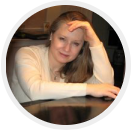
Our plan during this first term of online ensemble teaching was to allow the students to continue their Chamber music learning experience, while practising social distancing/isolation.Whereas the goal of chamber music is to create a shared musical experience in an intimate setting, the current global conditions necessitated a new realization of this centuries-old art form.
Process
At the beginning of term, it was unclear what platforms would be available to suit a varied range of students’ resources. Issues such as internet providers and connections, computing and audio/visual equipment, as well as acoustics, quality and availability of musical instruments, were all new considerations for teaching ensembles online. Alongside these considerations were the choice and selection of appropriate online teaching platforms and recording software that would be user-friendly and efficient.
Students were grouped into duos and trios with music ranging from early baroque to the modern era. Small ensembles were chosen to heighten the experience of focussed listening, to develop the communication skills necessary to work out musical and technical challenges, and to facilitate the mixing process. A total of 14 players were grouped into 7 ensembles, comprising 4 duos and 3 trios.
“… the current global conditions necessitated a new realization of this centuries-old art form.”
As part of the teaching experience, in which instruction was given to one student at a time in the presence of the group, each player had the opportunity to hear and absorb their partner’s performance, a meaningful and often overlooked step in the preparation of an ensemble performance. This resulted in more musical dialogue even where tracks were separately recorded. Some students expressed surprise and elation at having the sense of intuiting each other even when online, and they provided relevant musical input to their partners. Significant improvement was achieved by all ensembles over the term in areas of style, rhythm, musicality and communication.
Students were also asked to come up with ideas to achieve synchronous video performances of their group. Students derived most benefit from using Zoom as a synchronous learning medium in class, with recordings submitted to the director for review at regular intervals. They also connected over other social media for group rehearsals and discussions outside of class. The decision to use Reaper (or equivalent) as a recording platform was generally accepted by everyone and was already known and used by several students for other projects. These students shared their knowledge with others in groups without this background, and it has been encouraging to note the new skills that have been developed in this term, giving everyone the capability to share their collaborative efforts online.
Directed by Nicole Presentey. ‘Dido’s Lament (Dido and Aeneas)’ by Henry Purcell. Performed by Emmanuelle Crites and William Annand
Small ensembles are challenging in normal times, even more so when the final product is a composite recording of individual tracks. Without cues normally given in person, new ways to create a natural ebb and flow of the music were developed to avoid undesirable metronomic performances. Video recording proved to be a challenge for most ensembles due to time constraints and will be a goal in future although at least one group will produce a video of their collaborative effort.
Repertoire
This term we worked on the following repertoire: “Duo III in F Major for Flute and Viola:Romance and Allegretto” (Hoffmeister), “Puisqu’ici-bas toute âme” (Fauré), “Duo for Violin and Viola No. 1, KV 423: Allegro” (Mozart), Dido’s Lament- Dido and Aeneas (Purcell), “Sonata for Flute and Violin TWV 40: 111: Dolce, Scherzando, Largo” (Telemann), Solvejgs Lied -Peer Gynt (Grieg), Noel Nouvelet (trad. Arr. Rondeau)
Looking Ahead
The 2020 Fall Term of Chamber Ensembles has been fruitful and inspiring, leading one to believe that nothing can stop musicians creating together, no matter the challenge.
Although many students had never performed this kind of music before joining the course, they can now call themselves chamber players, as they have captured the very essence of what communicating musically in such a formation requires.
The Chamber Ensemble members
William Annand, guitar; Kaitlan Brazeau, soprano; Laura Bruno, soprano; Sophie Carpenter, trumpet; Emmanuelle Crites, soprano; Victoria Goodman, violin; Kiara McNaught, flute; Maryn Pegan, soprano; Simon Polesel, viola; Phil Richard, piano; Sherrie Spelchuk, soprano; Jenifir Thies-Thomsen, Flute; David Thies-Thomsen, viola; and Minako Uchino, Harpsichord
Directed by Nicole Presentey. ‘Dido’s Lament (Dido and Aeneas)’ by Henry Purcell. Performed by Emmanuelle Crites and William Annand
Saxophone Ensemble Directed by Mike Tremblay
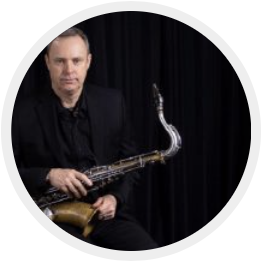
I am pleased to say that the saxophone ensemble is alive and well despite all the challenges that the new reality of living with Covid-19 has brought us. Our students have been resilient from day one of the process. Together, we had to figure out technical issues, microphones, recording programs, time delay, intonation issues, and dozens of other questions before the first sounds could be made.
Process
This fall we decided to have three saxophone quartets (soprano, alto, tenor, and baritone). Each quartet would meet once a week on Zoom to look at both technical challenges and musical issues. The groups would discuss tempos, style, and which section of a piece would be worked on and recorded. Typically, the baritone player would go first, then we would pass his recording around to the remaining three members. Once all four players had recorded their parts, an initial mix was done by either myself, or one of the ensemble students.
“Together, we had to figure out technical issues, microphones, recording programs, time delay, intonation issues, and dozens of other questions before the first sounds could be made.”
Each student would then listen to the rough mix, and decide if they would like to re-record some or all of their parts, or go on to the next section of the piece. This seemed to be the best way to progress through the music. We are very fortunate to have Zachary Sedlar in the ensemble. Not only is he a fabulous musician, but he has a solid background as a professional sound and recording engineer.

Repertoire
Quartet 1 is called the Raven Saxophone Quartet. This group has been together for two years and is on the heels of competing at the International Chamber Ensemble Competition at the New England Conservatory of Music in Boston, MA where they placed fourth. This group is currently working on the Suite for Saxophone Quartet by Paul Creston, and the 3rd movement of the Iberia Suite entitled La Pamploma.
Quartet 2 is currently working on the 2nd movement of the Iberia Suite by Ed Calle, entitled Siesta. They also worked on Henry’s Dilemna by Alun Cook.
Quartet 3 is currently working on the first movement of the Iberia Suite entitled Midnight Rumba. This group also worked on the Fanfare, Air, and Finale for saxophone quartet by Arthur Frackenpohl.
Looking Ahead
In the new year we will try to get our saxophone choir back together. Carleton University Saxophone Ensemble has a ten-year history of bringing saxophonists from all over the area together to take part in a choir that sometimes has members numbering more than 40 saxophones. We look forward to what the new year brings, and hopefully one day being able to play together in the same space.
The Saxophone Ensemble members
Quartet 1: soprano Rebecca Cowal, alto Liam Nesbit, tenor Samuel Boucher, baritone Zachary Sedlar
Quartet 2: soprano Catherine Gendron, alto Kealey Kennedy, tenor Lisa Yace, baritone Alex Cass
Quartet 3: soprano Samuel Boucher, alto Catherine Gendron, tenor Abdi Nur, baritone Zachary Sedlar
Choir directed by Antonio Llaca
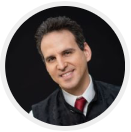
As the fall semester 2020 approached, I prepared to teach choral singing to a group of 30 choristers, several of whom had never sung in a choir prior to joining the Carleton University Student Choir. Over the semester we worked together at learning the ropes of not only choral singing but also the process of singing as an ensemble over Zoom. Issues such as latency, slow internet connections, made the road bumpy at times however the students and choral music team worked hard to overcome these issues and still be able to perform as an ensemble. Students worked on new and familiar pieces, vocal exercises and mostly vocal and choral technique from their homes.
Process
Choral Online rehearsals started taking place in the summer months as part of the OMER research project, this allowed our choral team to refine rehearsal technique and choral pedagogy prior to the start of rehearsals in September. Joanne Moorcroft (accompanist) Deanna Singh (choral assistant and vocal coach) and myself worked weekly with singers on synchronous and asynchronous platforms to teach, rehearse and produce choral music.

Choral exercises and vocal technique were at the core of the pedagogy during synchronous rehearsals while asynchronous activities were used to prepare and produce choral music. While the choral ensemble was not able to meet in person, it was still able to perform during Inclusion week activities at the university as well as during the Remembrance Day ceremony in October and November 2020 respectively. Choristers also benefited from masterclasses on vocal technique and diction from local and international guests. This teaching approach has proven to be effective and yielded positive results for choristers in vocal production, intonation, diction and ensemble blend. New techniques have also been developed over the course of the semester to best attain the ensemble goals and respond to the singers’ needs.
Repertoire
This Fall we worked on “O Canada” by Calixa Lavallé, and “Follow me Sweet Love” by Michael East
Looking Ahead
As we approach the winter semester, we are excited to see this ensemble to take more and more shape. The students have become more comfortable and capable with the technology and are now able to take on more complex repertoire, and expand on their knowledge of the choral art.
The Choir Ensemble members
Mikayla Wills, Sinead Almeida, An Bui, Rebecca Cowal, Sachi Ghalib, Nicolas Code, Mubarak Farah, Jared Halls, Nikita Katashonov, Johnathan Kennedy, Robert Magee,NicholasMichaud, Jean-NicolasRichardson, SpencerTheoret, Madeleine Gunn, Elizabeth Kells, AaryannaGuillermo, YasminKharazmi Toosi, Megan Reeksting, Trinity Piette, Samantha Rattigan, Matthew Auger – Di Labio, Alexander Player, Ethan Ryan, Malyk Zalzalah, Matt Scriven, Jacob Grise, Parsa Zandi
Directed by Antonio Llaca. ‘Oh Canada’ by Calixa Lavallé. Performed by Mikayla Wills, Sinead Almeida, An Bui, Rebecca Cowal, Sachi Ghalib, Nicolas Code, Mubarak Farah, Jared Halls, Nikita Katashonov, Johnathan Kennedy, Robert Magee, Nicholas Michaud, Jean-Nicolas Richardson, Spencer Theoret, Madeleine Gunn, Elizabeth Kells, Aaryanna Guillermo, Yasmin Kharazmi Toosi, Megan Reeksting, Trinity Piette, Samantha Rattigan, Matthew Auger – Di Labio, Alexander Player, Ethan Ryan, Malyk Zalzalah, Matt Scriven, Jacob Grise, Parsa Zandi
Jazz Ensemble directed by Ed Lister
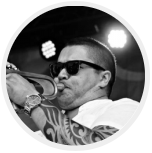
I had two goals for the Jazz ensemble when moving live rehearsal and performance to the online world. The first of which was to find a software that would allow for as close to real time performance as possible. My second goal was more of a back-up plan to the first should it not be successful and that was to find a platform where both students and director can collaborate on a recording project asynchronously.
Process
So far, I have been pleasantly surprised by both the online platforms and the students in these online rehearsal situations. The majority of our work in the first 5 or 6 sessions was spent building an E.P. / Album of original material where every student sent in multiple recordings of themselves which were then mixed and mastered together and compiled into an album format. We found that ‘Reaper’ was the best program for this. Bandlab has proven to be less than efficient in this situation.
Repertoire
This term we worked on building the Blues in Bb, “Crisis” by Freddie Hubbard, “Blues for Monk” by Ed Lister, “Breathe” by Ed Lister, “Girl from Ipanema” by Antonio Carlos Jobim, and “Send One Your Love” by Stevie Wonder
Directed by Ed Lister. ‘Breathe’ by Ed Lister performed by Kat Armstrong, Laura Seaborn, Nick Lund, Mike Mopas, Kiran D’Souza, Joseph Moolcherry, Joel Oppong-Boateng, Zach Sedlar
Looking Ahead
We are now in the midst of taking our first steps with a program called Jamulus. This has been the easiest to set up but is still not without its problems. Several of my students have successfully used this program to have an online jam session with little to no latency and really viable audio. We are currently in the process of getting as many of the ensemble students set up with hard wired internet / Audio interfaces and Microphones so that they can all participate synchronously. I’m very confident in this program so this is what we will be focusing on for the foreseeable future.
Jazz Ensemble members
Ensemble A: Kat Armstrong- Vocals; Laura Seaborn – Vocals; Nick Lund – Piano; Mike Mopas – Bass; Kiran D’Souza – Piano; Joseph Moolcherry – Guitar; Joel Oppong-Boateng – Drums; Zach Sedlar – Sax
Ensemble B: Julien Cloutier – Drums; Joseph Naszady – Piano; David Kantymir – Guitar; Kiara D’Souza – Vocals; Robin Kenny – Vocals; Peter Kuhl – Trumpet; Luke Deraps – Trumpet; Keith Macgougan – Bass
Directed by Ed Lister. ‘Crisis’ by Freddie Hubbard performed by Julien Cloutier, Joseph Naszady, David Kantymir, Kiara D’Souza, Robin Kenny, Peter Kuhl, Luke Deraps, Keith Macgougan
Brass Ensemble Directed by Keith Hartshorn-Walton
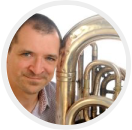
The Brass Ensemble began as a special project, and was made official last year, but our original goals were reassessed and redesigned with the new requirement of online delivery. Our purpose remains the same: to create a space for Carleton brass players to explore the repertoire and history of brass ensemble music.
Process
This term’s ensemble consisted of a brass quartet with two trumpets, trombone and tuba. We met for weekly sessions on zoom that consisted of two parts: the first hour for rehearsing and planning recording projects, and also playing through pieces along with YouTube videos for repertoire development and exposure. We looked at scores together and discussed the differences in writing within the different eras and styles covered, which included Renaissance works up to and including modern New Orleans brass music. The members played their parts individually in a masterclass format, with the rest of the class able to hear and see their part. Several of the works studied were recorded individually and assembled by the instructor, using guide tracks for individual recording and edited in Logic Pro.
‘La Spiritata,’ directed by Keith Hartshorn-Walton.
The second hour of each Zoom session involved a presentation and discussion of a different era, style, or particular ensemble of brass music. An overview of the historical background was followed by musical examples shared via YouTube or other sources, as well as related articles and suggestions for further reading. In addition to our group sessions, the ensemble members completed an individual project of their choice on brass ensemble topics. The students’ efforts showed their individual interests, and included two compositions for brass quartet, one in a renaissance style and another in a modern style; a presentation on the sousaphone and developments of New Orleans brass bands, and a recording project for trumpet quartet arranged and produced by the student. Each one of these projects was presented to the class in
our zoom sessions.
‘Finlandia Chorale,’ directed by Keith Hartshorn-Walton.
Looking ahead
Moving into next year, the brass ensemble looks forward to growing its membership to allow the study and performance of larger scale works. We will continue to explore music from the different eras of brass, and one topic that came up that has great potential is to explore how brass instruments have travelled the world, and see how they are utilized and reinterpreted through the lenses of global cultures. Should the ensemble remain online, an effort will be made to use emerging platforms which will allow for synchronous rehearsal and live performance. Branching out to video production with our collaborative recordings will also be explored.
The Brass Ensemble members
Sophie Carpenter – trumpet, Peter Kuhl – trumpet, Aaron Plazek – trombone, Gautam Sharma – tuba
Singer-Songwriter Ensemble Directed by Giselle Minns

The Singer Songwriter Ensemble is about creating music together. It’s about learning the skills required to write collaboratively, successfully. Developing the ability to get the best from yourself and your co-writers through positivity, patience, encouragement, and the love of music. It’s about writing in different genres, with different songwriters, from duos and trios, to the whole ensemble writing together, enjoying the process and creating great songs. From Country to Rock, Singer Songwriter to Pop, and everything in between.
Process
We worked through weekly Zoom meetings. For the first six weeks, each session started with some technical exercises and tips for songwriting, followed by a new genre that was agreed upon. Then musicians were put together, depending at first on their strengths and weaknesses, and songwriting groups were created. Using Zoom’s breakout rooms, the musicians were able to get creative, and using Google Docs were able to change and document lyrics and chords throughout the writing process. After a set time, we all met back in the main room and performed the songs for each other. For the last six weeks of the term, we all worked on developing the songs, with harmonies and instrumentations, extra lyrics and so on. The whole process was fun, exciting and hugely successful, with some excellent songs and original ideas overflowing from week to week.
Medley of Singer-Songwriter Ensemble final projects, directed by Giselle Minns.
Looking ahead
We had a blast writing online and in collaboration. Learning how to write together is one thing, doing it online is another beast all together. This is a skillset that will serve musicians well in the field of songwriting. However, writing in person is irreplaceable; stimulating and energizing in a different way. Having a combination of in person and online ensemble classes is a very exciting option for the future. Using the wonderful breakout rooms for online work, and then ‘in person’ collaborations, is the ideal way to write.
The Singer-Songwriter Ensemble members
Jonathan Bouchard, Sylvester Chan, Sachi Ghalib, Aaryanna Guillermo, Lucila Hidalgo, Johnathan Kennedy, Jasmine Kharazmi Toosi, Netanya Richards, Aiona Santana Macias, Liam Smith, Lynette Wilson